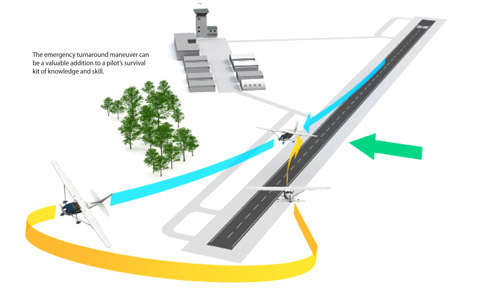[shadow=red,left]AOPA Pilot[/shadow] magazine has an interesting article on 180 degree turnback on engine failure after takeoff.
http://www.aopa.org/members/files/pilot/2011/april/technique.html

[move][glow=red,2,300]Anyone experience this in a Cub with enough altitude and wind conditions to make it back safely?[/glow][/move]
Here is snippet from the article by Barry Schiff:
"The impossible turn
When unprepared for such an engine failure, it generally is best to land straight ahead (or somewhat right or left of the runways extended centerline). NTSB records are replete with accidents resulting from pilots attempting to turn around and land from too low an altitude. The most common result of trying to avoid ground contact before completing the turn is a stall and/or a spin into oblivion. This is why a turn back to the runway is described by some as the impossible turn, a misleading description of what can be a life-saving maneuver. There are times when attempting to land straight ahead would be extremely hazardous and a less-desirable option.
Records are not kept and do not reflect the many success stories of those who experienced an engine failure, turned around, and landed safely and without incident. Lacking aircraft damage or personal injury, there obviously is no reason to file an accident report. Video of one such event was posted on the Air Safety Institutes website.
The difference between success and failure is not only having sufficient altitude, but knowing how and when the turnaround maneuver can be performed with relative safety."
http://www.aopa.org/members/files/pilot/2011/april/technique.html

[move][glow=red,2,300]Anyone experience this in a Cub with enough altitude and wind conditions to make it back safely?[/glow][/move]
Here is snippet from the article by Barry Schiff:
"The impossible turn
When unprepared for such an engine failure, it generally is best to land straight ahead (or somewhat right or left of the runways extended centerline). NTSB records are replete with accidents resulting from pilots attempting to turn around and land from too low an altitude. The most common result of trying to avoid ground contact before completing the turn is a stall and/or a spin into oblivion. This is why a turn back to the runway is described by some as the impossible turn, a misleading description of what can be a life-saving maneuver. There are times when attempting to land straight ahead would be extremely hazardous and a less-desirable option.
Records are not kept and do not reflect the many success stories of those who experienced an engine failure, turned around, and landed safely and without incident. Lacking aircraft damage or personal injury, there obviously is no reason to file an accident report. Video of one such event was posted on the Air Safety Institutes website.
The difference between success and failure is not only having sufficient altitude, but knowing how and when the turnaround maneuver can be performed with relative safety."




